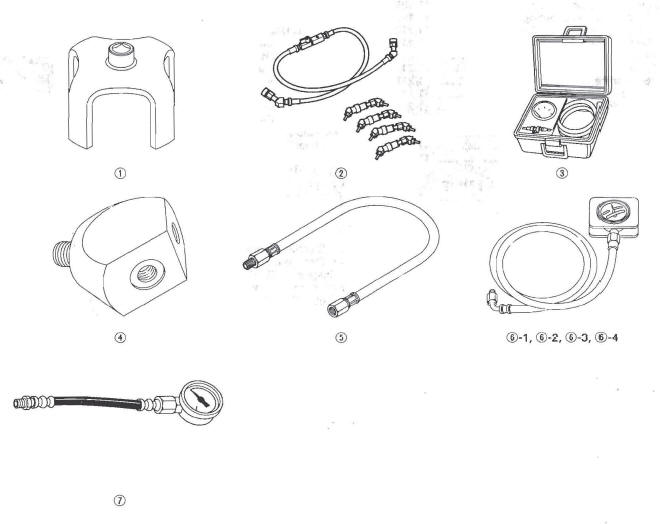Honda CR-V: Fuel and Emissions Systems
Honda CR-V (2006–2011) Service Manual / Fuel and Emissions / Fuel and Emissions Systems
Special Tools


-
Fuel Sender Wrench
-
Fuel Pressure Gauge Attachment Set
-
Vacuum/Pressure Gauge, 0-4 in.Hg
-
Pressure Gauge Adapter
-
Oil Pressure Hose
-
A/T Pressure Hose
-
A/T Low Pressure Gauge W/Pane
-
A/T Pressure Hose, 2,210 mm
-
A/T Pressure Hose, Adapter
-
Fuel Pressure Gauge
READ NEXT:
 General Troubleshooting Information
General Troubleshooting Information
Intermittent Failures
The term "intermittent failure" means a system may
have had a failure, but it checks OK now. If the
malfunction indicator lamp (MIL) on the dash does not
come on, check for poor
 System Description
System Description
Electronic Control System
The functions of the fuel and emission control systems are managed by the
powertrain control module (PCM).
Self-diagnosis
The PCM detects a failure of a signal from a sensor
 How to Set Readiness Codes
How to Set Readiness Codes
Malfunction Indicator Lamp (MIL) Indication
(In relation to Readiness Codes)
The vehicle has certain "readiness codes" that are part
of the on-board diagnostics for the emissions systems.
If the vehi
SEE MORE:
 General Information
General Information
Your vehicle has been designed
primarily for use on pavement. But
its higher ground clearance allows
you to occasionally travel on unpaved
roads, such as campgrounds, picnic
sites, and similar locations. It is not
designed for trail-blazing, mountain
climbing, or other challenging offr
 EVAP System
EVAP System
Component Location Index
EVAPORATIVE EMISSION (EVAP)
CANISTER PURGE VALVE
Replacement
POWERTRAIN CONTROL MODULE (PCM)
General Troubleshooting Information
Replacement
FUEL TANK VAPOR CONTROL VALVE
FUEL FILL CAP
FUEL TANK PRESSURE
(FTP) SENSOR
Replacement
© 2016-2025 Copyright www.hcrv.net

